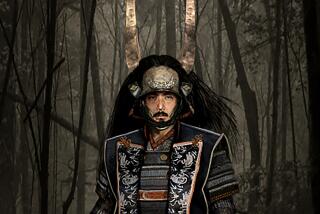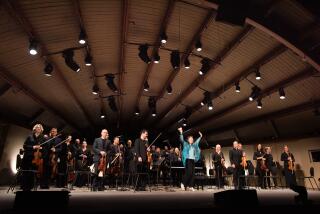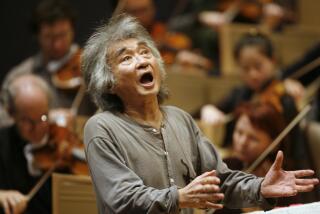MUSIC REVIEW : HOSHI ENSEMBLE AT THE JAPAN AMERICA THEATRE
- Share via
Highly regarded in his native Japan, versatile in style and output and prolific to a fault, Minoru Miki would seem to be the very model of a successful 20th-Century composer.
And, indeed, Miki’s use of traditional Japanese instruments in the untraditional, unique area of eclectic music of our era sets him apart from mere avant-gardists.
But the genre, if that is the right word for Miki’s hodgepodge of pentatonic, modal and chromatic harmonic styles, may in itself not be able to bear the weight of the 56-year-old composer’s eclecticism. In hearing Miki’s works, one finds moments of confusing musical identity, moments in which the composer becomes, for short periods, Ginastera, Delius or Rozsa.
At least that was the impression when the Hoshi Ensemble from Tokyo--a group of amateur musicians devoted to the precepts of the “Nihon Ongaku Shudan” school formed in the early 1960s by Miki and Katsutoshi Nagasawa--made its Los Angeles debut at the Japan America Theatre Saturday night.
In two extended works and a shorter piece--a total of 60 minutes of music--the composer’s architectural sense seemed often to falter. Continuity, in terms of apprehendable progressions of musical thought, appeared to be lacking; Miki’s episodic writing sometimes threatened to become chaotic.
Conducted carefully by Yukio Kanoh, the 21-member ensemble from Tokyo--playing bamboo flutes, Japanese lutes, shamisen, koto and percussion--gave what seemed to be a most intense and focused reading of “Hote” (Giant Flame), Miki’s 30-minute symphonic work, which appears to describe the background to an unmade film.
“Hote,” like Miki’s “Wasan” Concerto, which closed the program, rambles, moves in fits and starts and often comes to a dead halt in a number of cadenzas for soloists of the orchestra. Its contents are fascinating, its length unnecessary.
The ensemble, joined after intermission by 20-plus members of the Japanese Philharmonic of Los Angeles and led by the music director of that orchestra, Akira Kikukawa, played confidently.
Two Dances by Nagasawa and an arrangement of “Echigojishi,” the melody written by Kineya in the Edo period and most familiar to Western ears of our century from its use by Puccini in “Madama Butterfly,” completed the program.
More to Read
The biggest entertainment stories
Get our big stories about Hollywood, film, television, music, arts, culture and more right in your inbox as soon as they publish.
You may occasionally receive promotional content from the Los Angeles Times.










